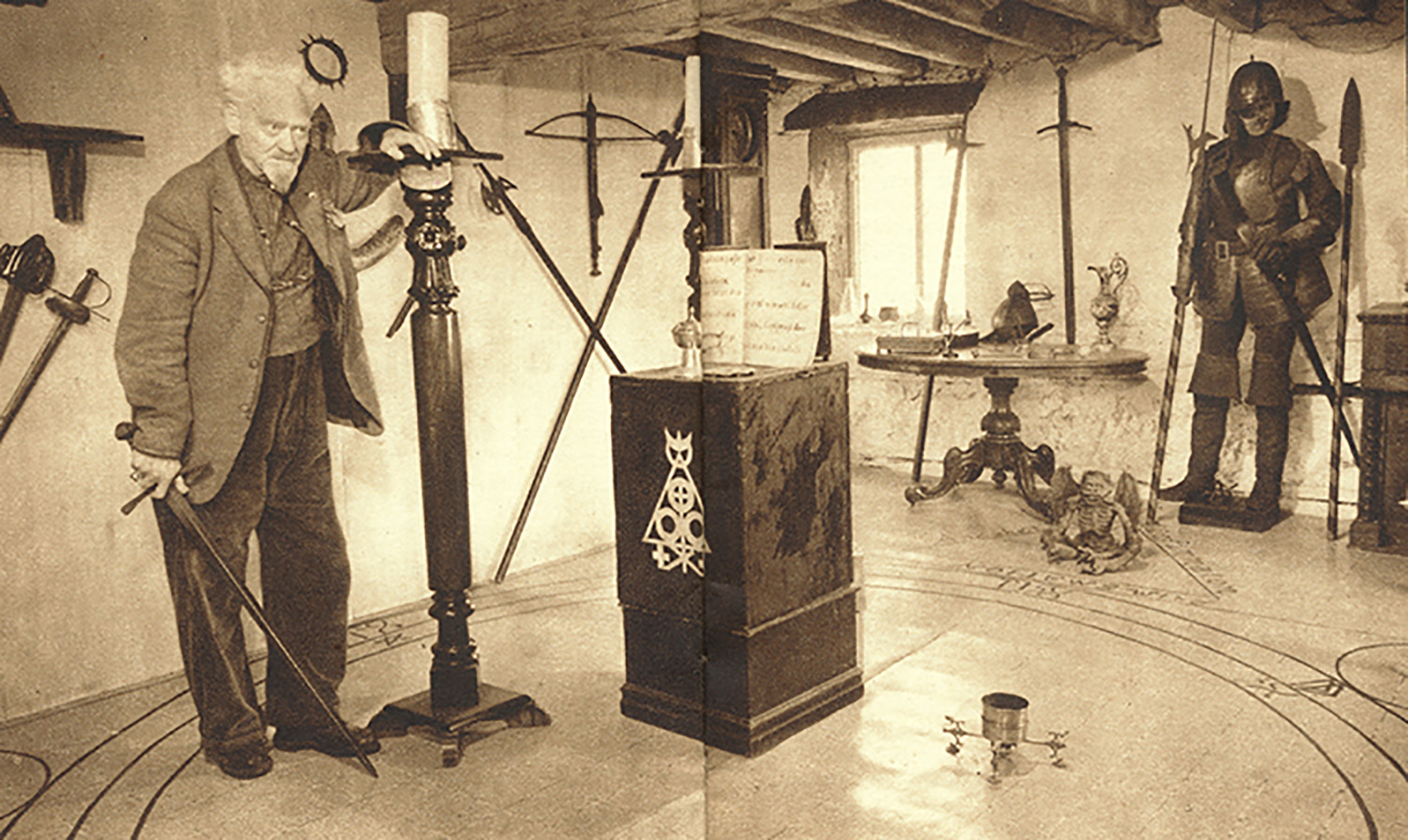Gerald Gardner
Gerald Brosseau Gardner (13 June 1884 – 12 February 1964), also known by the craft name Scire, was an English Wiccan, as well as an author and an amateur anthropologist and archaeologist. He was instrumental in bringing the Contemporary Pagan religion of Wicca to public attention, writing some of its definitive religious texts and founding the tradition of Gardnerian Wicca.
Gardner is internationally recognised as the "Father of Wicca" among the Pagan and occult communities. His claims regarding the New Forest coven have been widely scrutinised, with Gardner being the subject of investigation for historians and biographers Aidan Kelly, Ronald Hutton and Philip Heselton.
Biography
Born into an upper-middle-class family in Blundellsands, Lancashire, Gardner spent much of his childhood abroad in Madeira. In 1900, he moved to colonial Ceylon, and then in 1911 to Malaya, where he worked as a civil servant, independently developing an interest in the native peoples and writing papers and a book about their magical practices. After his retirement in 1936, he travelled to Cyprus, penning the novel A Goddess Arrives before returning to England. Settling down near the New Forest, he joined an occult group, the Rosicrucian Order Crotona Fellowship, through which he said he had encountered the New Forest coven into which he was initiated in 1939. Believing the coven to be a survival of the pre-Christian witch-cult discussed in the works of Margaret Murray, he decided to revive the faith, supplementing the coven's rituals with ideas borrowed from Freemasonry, ceremonial magic and the writings of Aleister Crowley to form the Gardnerian tradition of Wicca.
Moving to London in 1945, he became intent on propagating this religion, attracting media attention and writing about it in High Magic's Aid (1949), Witchcraft Today (1954) and The Meaning of Witchcraft (1959). Founding a Wiccan group known as the Bricket Wood coven, he introduced a string of High Priestesses into the religion, including Doreen Valiente, Lois Bourne, Patricia Crowther and Eleanor Bone, through which the Gardnerian community spread throughout Britain and subsequently into Australia and the United States in the late 1950s and early 1960s. Involved for a time with Cecil Williamson, Gardner also became director of the Museum of Magic and Witchcraft on the Isle of Man, which he ran until his death.
Death
In 1963, Gardner decided to go to Lebanon over the winter. Whilst returning home on the ship, The Scottish Prince on 12 February 1964, he suffered a fatal heart attack at the breakfast table. He was buried in Tunisia, the ship's next port of call, and his funeral was attended only by the ship's captain. He was 79 years old.
Several years after Gardner's death, the Wiccan High Priestess Eleanor Bone visited North Africa and went looking for Gardner's grave. She discovered that the cemetery he was interred in was to be redeveloped, and so she raised enough money for his body to be moved to another cemetery in Tunis, where it currently remains.
Personal life
Gardner only married once, to Donna, and several who knew him made the claim that he was devoted to her. After her death in 1960, he began to again suffer serious asthma attacks. Despite this, as many coven members slept over at his cottage due to living too far away to travel home safely, he was known to cuddle up to his young High Priestess, Dayonis, after rituals.
Legacy
Commenting on Gardner, Pagan studies scholar Ethan Doyle White commented that "There are few figures in esoteric history who can rival him for his dominating place in the pantheon of Pagan pioneers."
Though having bequeathed the museum, all his artifacts, and the copyright to his books in his will to one of his High Priestesses, Monique Wilson, she and her husband sold off the artefact collection to the American Ripley's Believe It or Not! organisation several years later. Ripley's took the collection to America, where it was displayed in two museums before being sold off during the 1980s.
